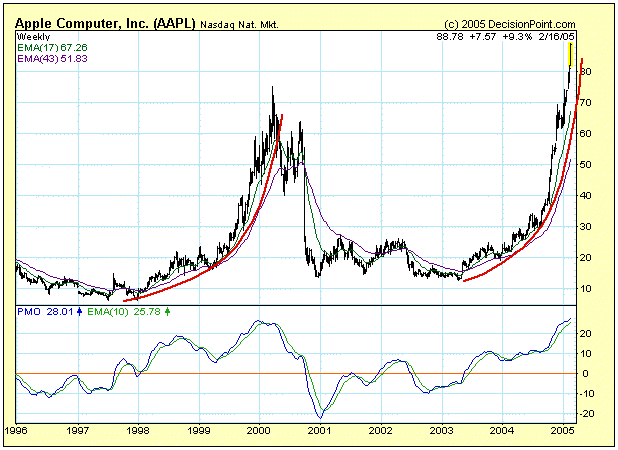Investors love the Apple (AAPL) "story" and they are driving he stock's price into a vertical ascent. When a stock arcs into an ever-increasing angle of ascent it is called a parabolic rise. "Investors" get into a feeding frenzy, causing the price rise to become so steep that it is unsustainable. The inevitable outcome of a parabolic is a crash, because investor sentiment will at some point reverse, and people are suddenly trying to get out of the stock as fast as they were previously trying get in.
What is at once amusing and tragic is that, as you can see on the chart, this isn't the first time this has happened to AAPL. Nevertheless, here we go again. One piece of recent news that has propelled the stock is the announcement of a 2:1 split, and coincidentally there was also a 2:1 split in 2000 as well. Those who fail to learn from history . . .
Another driving force behind parabolics is short sellers. Their suicidal attempts to pick a top followed by frenzied short covering creates even more demand to drive the price higher. It is foolhardy to play parabolics in either direction.
I don't know when this parabolic will finally collapse, but it is virtually guaranteed that it will. (Note that the PMO is very overbought, a sign that the end is probably near.) Once that happens, prices can return to their starting point (or close to it). Another less disastrous outcome is that about 50% of the parabolic gains can be lost, then the stock enters a high-level consolidation for several years.
Personally, I think Apple is a good company, I love their products, and in my opinion the company's prospects today are better than they have been in years; however, the current price behavior reflects unrealistic investor expectations.







